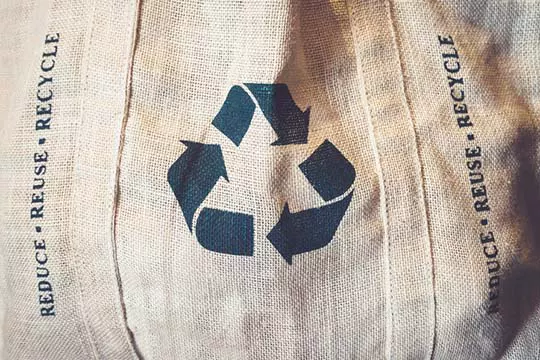How Recycled Bags Go From Trash to Treasure

Learn the Differences Between the Life Cycles of Plastic and Recycled Bags!
Single-use plastic bags serve their purpose in the short term, providing a quick and easy way to transport items from one place to the next. But, what happens next?
Our infographic detailing the life cycle of a plastic bag tells the story of what goes into making them and breaking them down, and everything in-between. And yet, we feel that there is more to explain when exploring the environmental destruction that plastic bags can cause. There is another side to that story, the one involving recycled bags, and it’s important to examine.
While plastic bags are stuck in their tumultuous lifecycle, eco-friendly consumers are enjoying the journey of their recycled bag. We answer a few questions while looking at the differences between each of these journeys.
Where Does It Start?
Plastic bags begin their journey as crude oil or natural gas, ultimately becoming polyethylene through a heating process. After creating the material, it is strung out and stretched. The final result is a plastic bag. On the other hand, recycled bags have a much cleaner beginning.
Natural resources aren’t needed to create recycled bags. In order to create them, post-consumer materials are put to use and waste is given new life. Popular materials for recycled bags include plastics, paper, and aluminum. The growing prominence of recycled bags is an example of making up for decades of plastic pollution by re-appropriating the potentially harmful materials.
How Long Can They Last?
Recycled bags are made of durable materials that are built to last for repeated use. With proper care, they can last 2 years or more. Consumers can count on them for fulling their shopping needs, and brands can rely on them to continue spreading their messaging of choice. For this reason, their life cycle differs significantly from that of a single-use plastic bag.
Regardless of what consumers are using single-use plastic bags for, they can expect the bags to stay true to their name. Often, they are only used for about 20 minutes before finding their way into the trash, or the vicious recycling process that plastic bags are subjected to.
What Happens Next?
Scientists estimate that it can take up to 1,000 years for plastic bags to break down and disintegrate completely. Each day they spend in the ocean, in a landfill, or on the side of the street, they cause harm to the environment, wildlife and our food chain.
On a similar timeline, recycled bags are just getting started. In a situation where a consumer discards a single-use plastic bag after use, a recycled bag would just be getting started. When recycled bags become worn down and reach the end of their lifespan, consumers can find other uses for the bag or choose to dispose of them in an eco-friendly fashion.
Final Thoughts
Consider how recycled bags compare to single-use plastic bags and the lifespan of each before making a decision on which to put to use. The potential benefits that recycled bags provide will go a long way in maximizing your investment. To go a step farther, becoming an eco-friendly business has its own positives. The different options we offer for materials are as dependable and versatile and can provide great results as you work towards your marketing goals.
Contact us today to learn about the variety of recycled bags we offer.
Tagged




